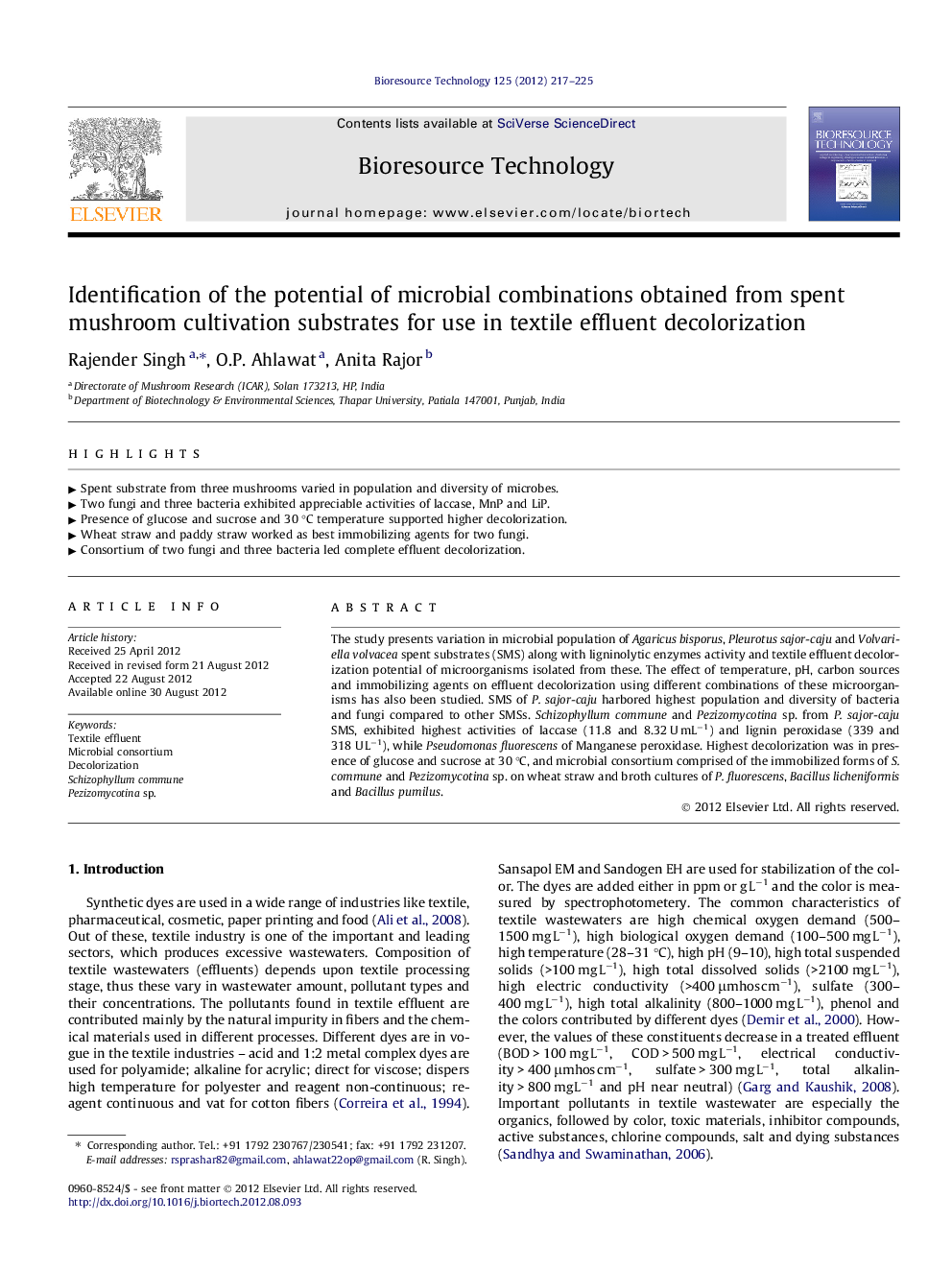| Article ID | Journal | Published Year | Pages | File Type |
|---|---|---|---|---|
| 681318 | Bioresource Technology | 2012 | 9 Pages |
The study presents variation in microbial population of Agaricus bisporus, Pleurotus sajor-caju and Volvariella volvacea spent substrates (SMS) along with ligninolytic enzymes activity and textile effluent decolorization potential of microorganisms isolated from these. The effect of temperature, pH, carbon sources and immobilizing agents on effluent decolorization using different combinations of these microorganisms has also been studied. SMS of P. sajor-caju harbored highest population and diversity of bacteria and fungi compared to other SMSs. Schizophyllum commune and Pezizomycotina sp. from P. sajor-caju SMS, exhibited highest activities of laccase (11.8 and 8.32 U mL−1) and lignin peroxidase (339 and 318 U L−1), while Pseudomonas fluorescens of Manganese peroxidase. Highest decolorization was in presence of glucose and sucrose at 30 °C, and microbial consortium comprised of the immobilized forms of S. commune and Pezizomycotina sp. on wheat straw and broth cultures of P. fluorescens, Bacillus licheniformis and Bacillus pumilus.
► Spent substrate from three mushrooms varied in population and diversity of microbes. ► Two fungi and three bacteria exhibited appreciable activities of laccase, MnP and LiP. ► Presence of glucose and sucrose and 30 °C temperature supported higher decolorization. ► Wheat straw and paddy straw worked as best immobilizing agents for two fungi. ► Consortium of two fungi and three bacteria led complete effluent decolorization.
